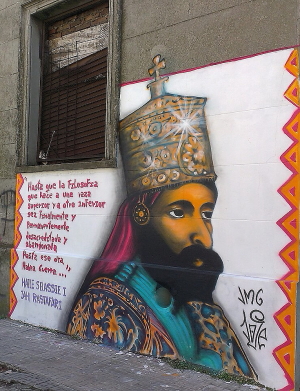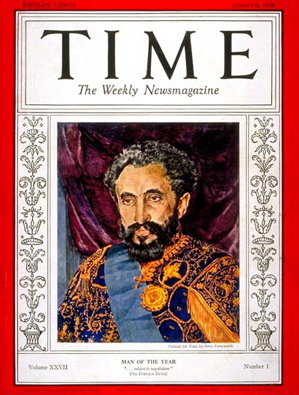SUNDAY, JULY 23: Rastafari around the world—estimated to number 700,000 to 1 million—hold Nyabingi drumming sessions and today celebrate the birthday anniversary of their God incarnate, Haile Selassie I. (Note: The belief that Selassie is God incarnate is not universally held; some Rastas regard Selassie as a messenger of God.) Born Ras Tafari Makonnen, Haile Selassie served as Ethiopia’s regent from 1916 to 1930 and emperor from 1930 to 1974.
IN THE NEWS: Rastafari have long pleaded for religious recognition for their use of cannabis in a sacramental manner, rather than risk arrest or job security for what they regard as “a way of life” and their “sacrament”—and the Commonwealth country of Antigua and Barbuda recently became the first Caribbean country to authorize the cultivation of marijuana used by Rastafari. According to Forbes, this right comes after decades of persecution, with the Rastafari group in that country having received the recognition by law in early March of 2023. (AP News also has the story.)
TAFARI MAKONNEN: FROM MUD HUT TO PALACE
Beginnings were meager for this emperor-to-be, born in a mud hut in Ethiopia in 1892. Selassie—originally named Tafari Makonnen—was a governor’s son, assuming the throne of Ethiopia in a complex struggle for succession. The nation’s leaders favored Tafari for the role of emperor—and, in 1930, he was crowned. Selassie would become Ethiopia’s last emperor.
Years prior to Haile Selassie’s enthronement, American black-nationalist leader Marcus Garvey began preaching of a coming messiah who would lead the peoples of Africa, and the African diaspora, into freedom. When news of Selassie’s coronation reached Jamaica, it became evident to some that Selassie was this foretold of messiah. Beyond the prophesies in the book of Revelation and New Testament that Rastafari point to as proof of Selassie’s status, the emperor also could trace his lineage back to King Solomon and the Queen of Sheba. Rastafari pointed to Selassie as the Conquering Lion of the Tribe of Judah, the Root of David and the King of Kings.
Did you know? The Rastafari receive their name from the combination of Ras—an honorific title, meaning “head”—and Tafari, part of Selassie’s birth name.
Selassie remained a lifelong Christian, but never reproached the Rastafari for their beliefs in him as the returned messiah. To this day, Rastafari rejoice on July 23, the anniversary of his birth.


